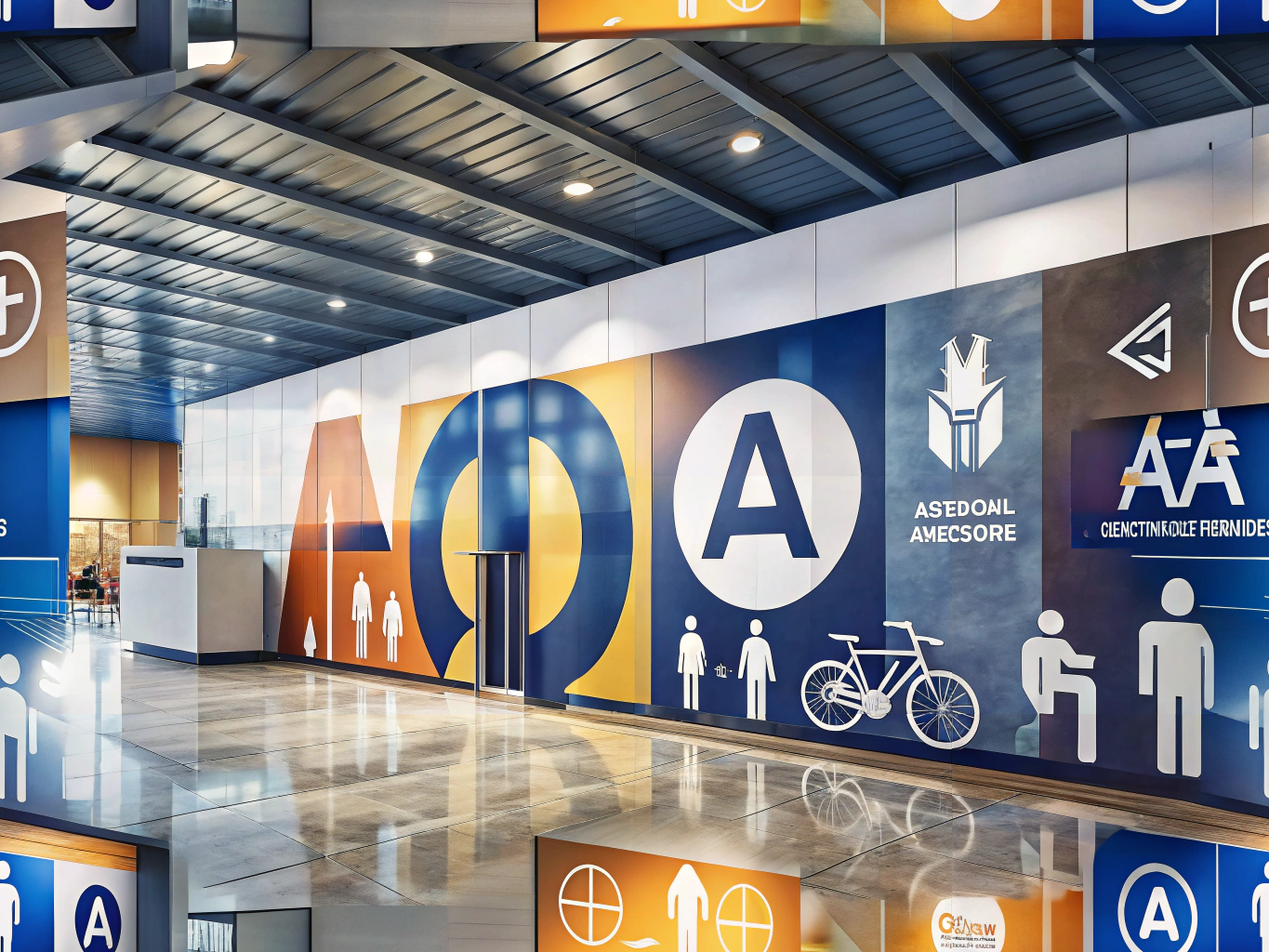Crafting Inclusive Spaces: The Art of ADA-Compliant Signage for Michigan Businesses
In the vibrant tapestry of Michigan’s business landscape, creating spaces that welcome everyone is not just a legal obligation—it’s a celebration of inclusivity. Designing ADA-compliant signs is a crucial step in this journey, ensuring that every customer, regardless of ability, feels valued and accommodated. Let’s explore the art and science of crafting these essential elements of accessibility.
Decoding the Language of ADA Signage
The Americans with Disabilities Act (ADA) is more than a set of rules; it’s a blueprint for inclusivity. ADA signage regulations are designed to make spaces navigable for all, focusing on tactile text, Braille, and visual contrast. For Michigan businesses, embracing these guidelines is a commitment to creating an environment where everyone can thrive.
The Building Blocks of ADA-Compliant Signs
- Tactile Text and Braille: Imagine navigating a space with your fingertips. ADA sign requirements mandate tactile text and Braille, ensuring that visually impaired individuals can independently explore and enjoy your business. The tactile text should be raised, with Braille positioned directly below, creating a seamless experience for all.
- Visual Contrast and Legibility: The dance between light and dark is crucial in ADA compliant signage guidelines. High contrast between text and background enhances readability for those with low vision. Picture a dark canvas with bright strokes of text—this contrast is not just visually appealing but essential for accessibility.
- Font and Size Specifications: Simplicity is key in ADA compliant sign design. Sans-serif, non-decorative fonts ensure clarity, while text size should be proportionate to the viewing distance, typically ranging from 5/8 inch to 2 inches in height. This thoughtful design ensures that your message is clear and accessible to all.
The Art of Designing for ADA Sign Compliance
- Consistent Placement: Like a well-choreographed dance, signs should be placed at a consistent height and location, typically 48 to 60 inches above the floor. This consistency ensures that they are easily found and read, guiding your customers with ease.
- Durable Materials: Choose materials that stand the test of time. Durable, wear-resistant materials ensure that your signs remain legible and compliant, even in bustling, high-traffic areas.
- Lighting Considerations: Illuminate your signs with care. Whether through natural or artificial lighting, ensure that your signs are visible at all times. This is especially crucial for emergency exits and directional signs, where clarity can be a matter of safety.
Navigating Local Nuances in Michigan
While ADA guidelines provide a national framework, Michigan businesses should also consider state-specific regulations. Engaging with local authorities or a professional sign designer familiar with Michigan’s unique requirements can ensure that your signage is both compliant and culturally resonant.
The Ripple Effect of ADA Compliant Signage
Beyond legal compliance, ADA compliant signage is a testament to your business’s commitment to inclusivity. It enhances your reputation as a welcoming, customer-friendly establishment, attracting a diverse clientele and fostering a sense of community.
A Commitment to Accessibility
By embracing these best practices for ADA compliant sign design, Michigan businesses can create spaces that are not only legally compliant but also warm and welcoming. Prioritizing accessibility in your signage design is a powerful statement of inclusivity and customer care, ensuring that every visitor feels seen, heard, and valued.
For more information on how to implement ADA-compliant signage, visit our ADA Signage Services page.

